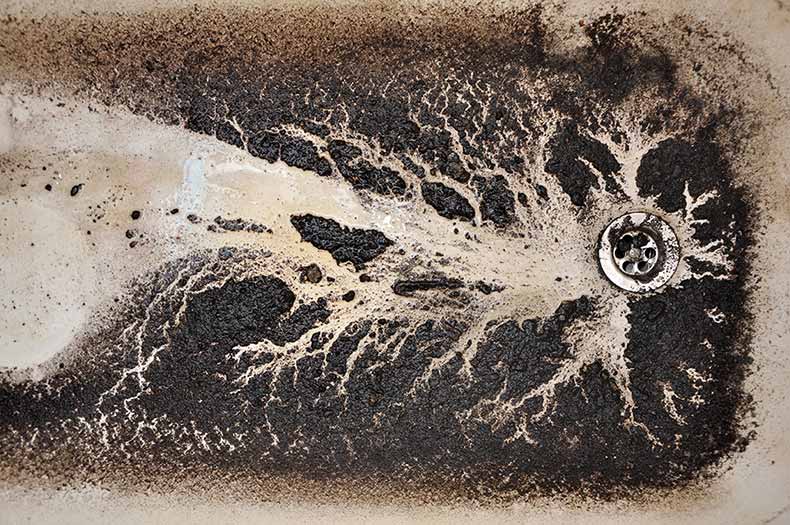Scrutinizing the Phenomenon of Effluent Rising Through the Bathtub
Scrutinizing the Phenomenon of Effluent Rising Through the Bathtub
Blog Article
We've stumbled upon this article relating to Why is Sewage Backing Up Into My Bathtub? listed below on the internet and concluded it made sense to discuss it with you here.

Sewage back-up in the bathtub can be an upsetting and unsanitary trouble for any kind of home owner. Not just is it inconvenient, but it also postures severe health and wellness risks and suggests underlying issues with the plumbing system. Understanding why sewage is showing up through the tub is important for taking ideal action to deal with the issue effectively.
Introduction to the Problem
Typical Factors for Sewer Back-up
Blockages in the Sewer Line
One of one of the most common reasons for sewer backup is an obstruction in the drain line. This can happen as a result of the accumulation of particles, grease, or foreign objects in the pipes, preventing proper circulation and creating sewer to back up into your bath tub.
Tree Origin Intrusion
Tree origins looking for dampness and nutrients can penetrate sewer lines with small splits or joints. Over time, these origins can grow and broaden, causing considerable damages to the pipelines and causing sewage back-up problems.
Understanding the Trouble
When sewer starts backing up right into the bathtub, it's a clear indicator of a problem with the drainage system. The wastewater that needs to be streaming far from your home is instead locating its way back right into your home, which can lead to considerable damages and health hazards.
Possible Causes
Numerous factors can contribute to sewage back-up in the bathtub. From blockages in the drain line to problems with the plumbing framework, recognizing the root cause is necessary for locating a solution.
Aging Facilities
Older homes might have dated plumbing systems that are a lot more susceptible to corrosion, cracks, and degeneration. As pipes age, they end up being much more susceptible to leaks and blockages, raising the chance of sewer back-up events.
Heavy Rainfall or Flooding
During durations of heavy rainfall or flooding, the sewer system might come to be overloaded with excess water, triggering back-ups and overflows. This can lead to sewer backing up right into tubs and other components inside the home.
Indications of Sewage Back-up
Foul Odors
Undesirable odors rising from drains pipes or fixtures, particularly in the restroom, might suggest sewage backup problems. These smells are frequently strong and consistent, indicating an issue that calls for immediate focus.
Slow Draining Fixtures
Bath tubs, sinks, and toilets that drain pipes gradually or otherwise whatsoever could be experiencing sewage backup. If several fixtures are affected simultaneously, it's likely that the concern originates from a typical point, such as the main sewage system line.
Gurgling Sounds
Weird gurgling or gurgling noises originating from drains pipes when water is running somewhere else in your home are a sign of air trapped in the plumbing system. This air accumulation can arise from sewage back-up and need to be explored quickly.
Health Risks Associated with Sewage Back-up
Contamination of Water System
Sewer backup can pollute the water system in your house, positioning a major health risk to you and your family members. Exposure to polluted water can cause intestinal problems, skin infections, and other ailments.
Mold and mildew Growth
Moisture from sewer back-up can create excellent conditions for mold growth in your house. Mold spores can intensify breathing troubles and cause allergic reactions in sensitive people, making punctual cleaning essential.
Spread of Disease
Sewage includes damaging microorganisms, infections, and bloodsuckers that can trigger a variety of diseases, including liver disease, cholera, and gastroenteritis. Entering contact with sewage or infected surfaces puts you in jeopardy of infection.
Tidying up After Sewer Backup
Disinfection Procedures
Completely sanitize and sterilize affected locations after sewage backup to eliminate harmful bacteria and avoid mold and mildew growth. Use proper cleaning items and protective equipment to ensure secure and effective cleaning.
Reconstruction of Impacted Locations
Fix any damages to flooring, walls, or components triggered by sewer back-up. Relying on the degree of the damages, you might require to change carpets, drywall, or various other materials to restore your home to its pre-loss condition.
Immediate Actions to Take
Turning Off Water System
In case of sewer back-up, it's important to switch off the supply of water to avoid additional contamination and damages. Locate the main water shutoff valve in your home and closed it off till the problem can be solved.
Speaking To an Expert Plumber
Dealing with sewage back-up is not a DIY task. Contact a licensed plumber with experience in dealing with sewage-related problems to examine the circumstance and perform needed repairs or clean-ups.
Staying Clear Of Contact with Contaminated Water
Until the sewer back-up is dealt with, avoid contact with contaminated water to stop the spread of bacteria and microorganisms. Wear safety gear if you must be in the damaged area and wash your hands completely later.
Preventive Measures
Normal Maintenance of Sewage System Lines
Arrange normal evaluations and upkeep of your drain lines to identify and deal with possible concerns before they rise right into significant troubles. This can consist of cleaning out debris, checking for tree origin intrusion, and repairing any type of damaged pipelines.
Setting Up Bayou Valves
Consider setting up backwater valves in your plumbing system to prevent sewage from receding into your home throughout periods of heavy rainfall or flooding. These shutoffs automatically close when water starts backing up, protecting your building from contamination.
Appropriate Disposal of Household Waste
Stay clear of purging anything aside from toilet tissue and human waste down the bathroom to stop obstructions and blockages in the drain line. Dispose of grease, oil, and other home chemicals properly to decrease the danger of plumbing problems.
Why Is Water Backing Up in My Bathtub When I Flush My Toilet?
What to do about a sewer line clog
First, don’t bother with plunging. No amount of plunging will dislodge the clog in a sewer line. The clog is too far away. Plungers are for clogs in the toilet itself, not the sewer line. Plus, the most likely causes of a sewer clog are:
Tree roots Flushed toys or feminine products Grease buildup Those items don’t move easily. And in the case of tree roots, the roots need to be cut out of the pipe and the pipe will need to be repaired.
You’ll need a closet auger. A closet auger is a type of plumber’s snake with a protective cover to keep from scratching the delicate porcelain toilet. If the clog is further down, you may need to remove the toilet or use one of your cleanouts to get to the clog.
We also recommend doing a video inspection of the drain to ensure that the cause of the clog has been completely removed. Otherwise, you could have the same problem again in a few days or weeks.
https://mspplumbingheatingair.com/blog/why-is-water-backing-up-in-my-bathtub-when-i-flush-my-toilet

I came across that review on Why sewage is coming up through your bathtub while browsing on the internet. Do you know another person who is inquisitive about the subject? Feel free to share it. Thanks a bunch for being here. Return soon.
Call Today
Report this page